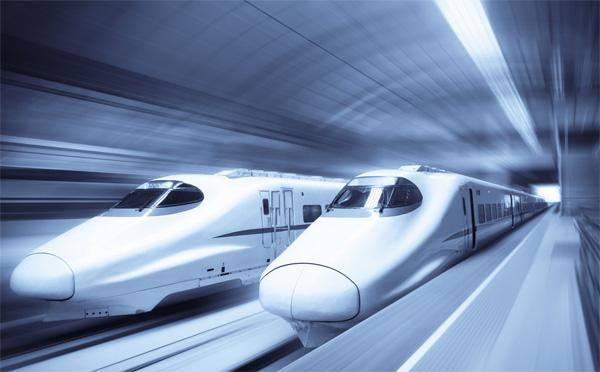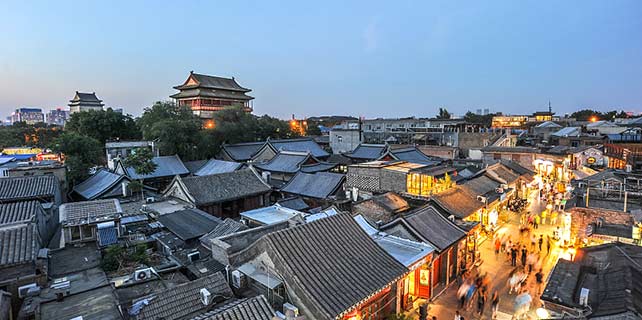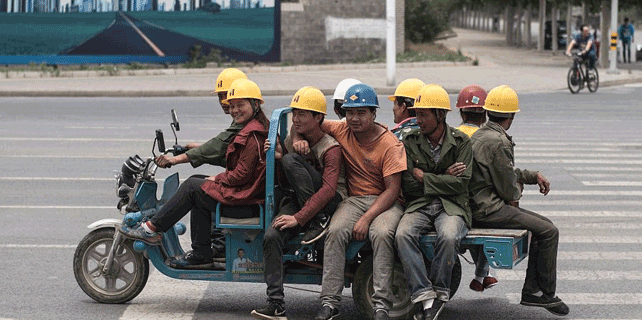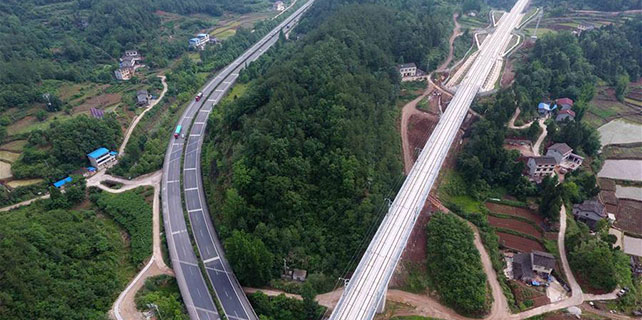Putting world on the fast track
 |
|
File photo shows high-speed rail in China. [Photo/Xinhua] |
Although the number of travelers in China is much higher than those in many countries combined, domestic and foreign airlines are not taking it easy as high-speed railways continue to expand. With train speeds increasing all the time, the gap between journey time by air and by rail is narrowing.
Eager to keep technological pace with its Japanese rivals, China Railway Rolling Stock Corp, the country's railway vehicle and equipment exporter, will invest in magnetic levitation or maglev trains next.
Maglev trains in Qingdao, Shandong province, can reach speeds of up to 600 km per hour already.
China is also working on next-generation bullet trains with a maximum speed of 400 km per hour. They will be ready by 2020 for markets linked to the Belt and Road Initiative.
"China's competitive advantages are significant with the country's high-speed rail technology having proven that it can stand the test of various climates ranging from alpine to tropical conditions," said Zheng Changhong, former deputy chairman of CRRC.
High-speed trains-some call them bullet trains-are ubiquitous in China. The country's high-speed railroads spanned 22,340 km by the end of last year, accounting for more than 60 percent of the world's total. Some 1 billion passengers traveled by high-speed trains in China last year, more than half of the world's total.
China Railway Corp, the country's railway operator, and CRRC have already mastered the technology for producing electric multiple-unit trains with speeds between 200 km per hour and 250 km per hour.
The country also set up a technology platform for producing bullet trains that can run at speeds of 350 km per hour. The platform developed the CRH380, a new generation of high-speed rolling stock, according to the National Railway Administration.
CRRC has so far participated in more than 10 high-speed and regular railway projects in the global markets, including the high-speed railroad linking Ankara and Istanbul in Turkey, the Moscow-Kazan high-speed railway in Russia, the China-Thailand railway and the Hungary-Serbia railway.
CRRC and other Chinese railway infrastructure and technology companies, including CRC and China Railway Signal and Communication Co, are currently building the Jakarta-Bandung high-speed railway in Indonesia.
When complete, it will connect Bandung with Surabaya, Indonesia's second largest city, which is 570 km away and has a population of 3.6 million.
With a speed of 350 km per hour, the railway is expected to cut travel time between Jakarta and Bandung from the current three hours to 36 minutes.
Wang Zhile, a senior researcher at the Chinese Academy of International Trade and Economic Cooperation in Beijing, said, "In the long term, China and the ASEAN economies will count on enhanced regional cooperation, especially in rail transportation, to stimulate people-to-people exchanges, trade and attract investment while improving regional economic integration."
Wang said Singapore, Thailand, Indonesia and Malaysia have plans to build high-speed rail links, which could further fuel hopes that Southeast Asia would one day have a unified rail system similar to the one in Europe.
"For China, it is an appropriate time to be a bullet train manufacturer in the world market," said Yu Weiping, CRRC's vice-president.
Yu said the company is keen to contribute to a new high-speed rail culture in the United States. High-speed trains traveling at speeds of more than 300 km per hour will help the US to change its surface transport systems, which have long been dominated by automobiles.
Demand is surging for such trains, advanced railway infrastructure, passenger services and regional connectivity in many countries, especially those related to the Belt and Road Initiative.
CRRC plans to build bullet trains and provide related services in both developing and developed markets, including Malaysia, South Africa, Turkey, the United Kingdom and the US.
"Helping other countries develop high-speed train networks would also stand China's rail sector in good stead. There is evidence to this effect. Exports of high-speed rolling stock, signaling systems and other equipment have generated decent returns so far," said Feng Hao, a railway development researcher at the National Development and Reform Commission.




















